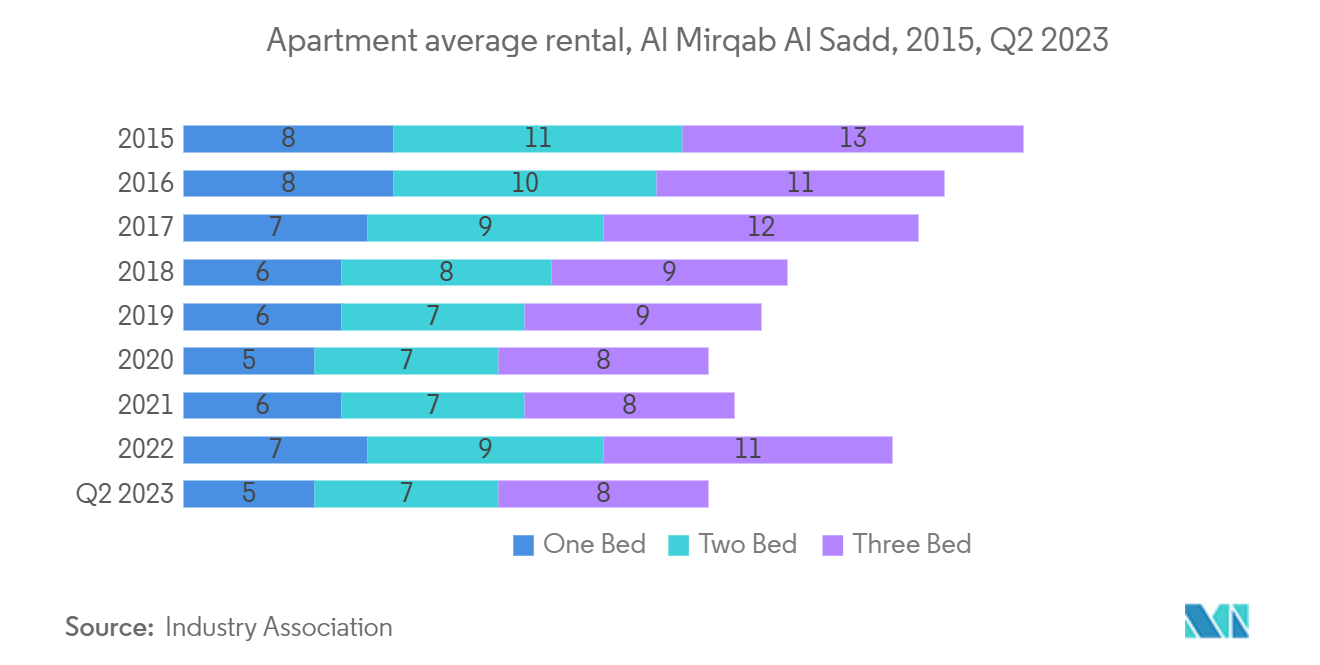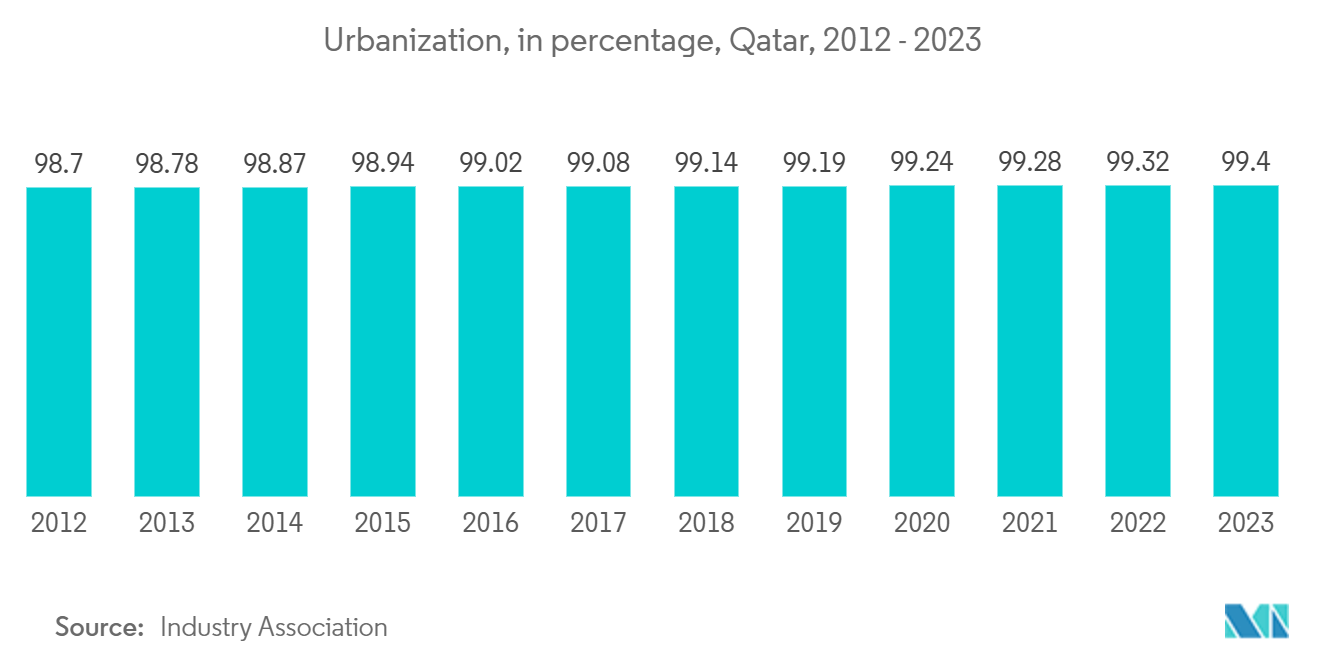Market Trends of Qatar Residential Real Estate Industry
Apartment Segment Observing Significant Growth
Rental rates in Doha declined significantly in the first six months of 2023 as a result of the reopening of apartments following the World Cup. However, residential rents have stabilized in recent months of 2024.
There has been strong demand for apartments in new, higher-end buildings as annual leases end and new residents flock to Qatar. As a result, many newly built buildings in high-end neighborhoods often reach 100% occupancy in as little as three months.
In the Pearl, there has been a trend of premium end tenants moving from older towers to new constructions. As a result, the occupancy rates vary from building to building depending on the age and quality of the buildings. In Q4 2023, it was also noted that the newer apartments in Fox Hills, Erkiyah City, and Lusail that are often offered at similar rental prices are becoming increasingly attractive to the residents of some of the older suburbs in Doha.
It was also noted that while new apartment buildings tend to have lower occupancy rates than older ones, villas across Doha tended to have high occupancy rates, and rents will start to increase gradually beginning in 2024.
More than 400,000 apartments and villas will be available in Doha by the end of 2024, which represents a 6.2% increase over the past decade.
Apartments are often offered rent-free for a month. Furnished units command a premium, ranging from QAR 500 (USD 137.32) to QAR 1,000 (USD 274.65) per month, depending on the size of the room. Pearl Island’s rental prices are on the rise as new supply is added to the market in areas such as Floresta Gardens/Giardino Village. Many older properties have lowered their asking rents in an effort to attract new tenants.

Increasing Occupancy Rates in the Residential Segment
Residential rentals continue to drop in Qatar, boosting the occupancy rate. The residential real estate market has been at the forefront of Qatar’s economic transformation. It has been instrumental in diversifying the country’s revenue streams and increasing foreign investments. These factors have helped Qatar’s economy become more resilient and less reliant on oil and natural gas exports, which have traditionally been the main source of income.
The government’s vision and dedication to developing a strong and sustainable infrastructure have been among the driving forces behind Qatar’s impressive growth in the residential real estate market. The country’s leaders have invested in a variety of infrastructure projects, including top-tier stadiums, notations, commercial centers, and residential properties.
The government has traditionally implemented investor-friendly policies and initiatives to provide incentives for both domestic and foreign real estate investors to engage in the property market. The introduction of harte zones, tax exemptions, and simplified business rules have created a business environment that encourages more investors to invest in Qatar’s booming property market.
The rapid urbanization and population growth of Qatar have led to an increase in the need for residential properties. As a result, developers have been concentrating on the development of residential projects that provide modern amenities and sustainable solutions. These developments are particularly appealing to expatriates, who make up a large part of Qatar’s population and are looking for high-quality housing.
Although the Qatari residential real estate market has seen rapid growth, there is a need to ensure that the growth is sustainable and managed properly. Preventing speculation, providing affordable housing, and maintaining a balance between demand and supply are important for the long-term sustainability of the market.


